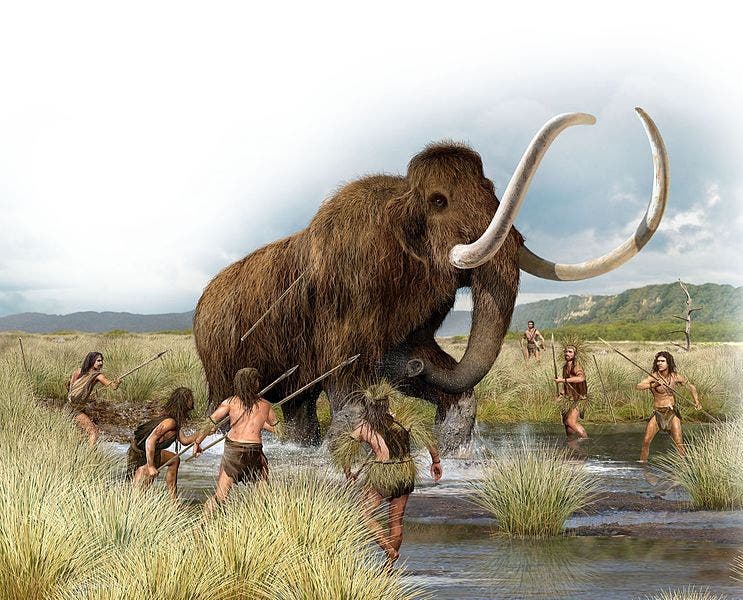During the last ice age — some 100,000 to 15,000 years ago — mammoths were widespread in the northern hemisphere from Spain to Alaska. Although some endured on a tiny island in the Arctic until 1650 BCE, most mammoths perished about 10,000 years ago during a time when they still interacted with humans. A new study that estimated a species’ lifespan from DNA suggests that these mammoths were most likely much older than the human hunters on their prowl, reaching up to 60 years of age.

The team of researchers at CSIRO and the University of Western Australia estimated a species’ lifespan based on its genome sequence. In order to unravel the lifespan clock, the researchers screened 42 genes from the DNA of 252 vertebrate species, both living and extinct. The higher the density of these genes, the higher the predicted lifespan.
When studying extinct animals, the researchers had to also use their living relatives and descendants for reference. In the case of the wooly mammoth and straight-tusked elephant, the Australian researchers performed estimations based on the genome of the modern African elephant, whose lifespan is of about 65 years.
So how long did mammoths live? The researchers estimate that they were able to live up to 60, and the same applied for straight-tusked elephants. Meanwhile, the maximum lifespan of Homo sapiens was deemed to be 38 years, according to this method. This may seem to invalidate the method seeing how the average lifespan in the United States currently is 78, but this figure actually matches other estimates of early modern human lifespans before the advent of medicine, agriculture, and sanitation.
Neanderthals and Denisovans, our close extinct relatives from the genus Homo, had a maximum lifespan of 37.8, very similar to modern humans living around the same time.
“We estimated that Denisovans and Neanderthals both had a lifespan of 37.8 years. This suggests that these extinct Hominidae species had similar lifespans to their early human… counterparts,” the researchers wrote.
The famous Lonesome George was the last remaining Pinta tortoise (C. abingdoni) when he died in 2012. He had been living in captivity at the Charles Darwin Research Station on the Galapagos Islands since 1972 and died at age 100. That’s relatively close to the maximum lifespan estimate of 120 years found by the study.
Other extinct animals whose lifespan were calculated by the study include the little bush moa (23 years) and the passenger pigeon (28 years). The animal with the largest lifespan is the bowhead whale (268 years). However, the longest-living vertebrate may be the Greenland shark, which could live to see 512 years of age, according to a 2017 study.

The estimates for invertebrates weren’t nearly as accurate, possibly because they do not exhibit the targetted genes to the same extent as vertebrates.
In the future, these genes could be used to further studying aging. For instance, there’s a debate among researchers as to what is the absolute limit of human longevity. The method elaborated by this study, however, cannot be used on individuals.
“It cannot be used to determine the lifespan of any individual human and the purpose of this study was to determine an important parameter of ecological significance which may assist in wildlife management,” said Benjamin Mayne, a scientist at the Commonwealth Scientific and Industrial Research Organisation (CSIRO) in Western Australia.
The findings appeared in the journal Scientific Reports.






